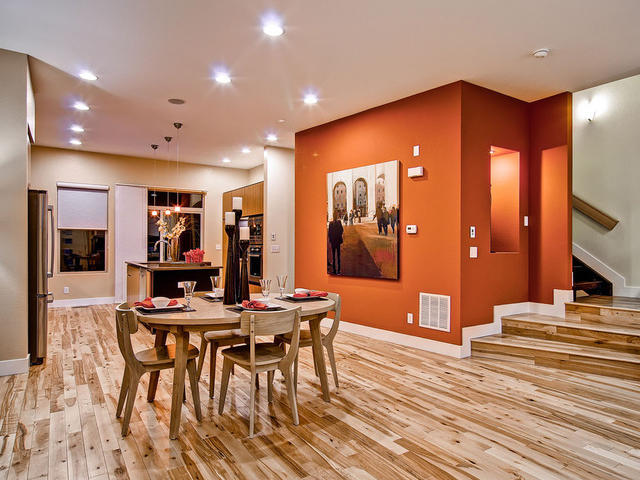
How to Choose the Paint Color You Really Want
Paint can be the quickest and most cost-effective way to transform a room. But where do you start if you haven’t already picked out a color? We interviewed three interior designers for their best tips. These practical suggestions will have you feeling more color-confident in no time.

Visit your closet. Whatever you do, don’t just head straight to the paint store to browse through the paint chips, or you risk being majorly overwhelmed. Of course, if you’ve already done this, you’re not alone. “People will actually hire a painter without knowing what colors they want to use yet,” says Kelly Porter, a D.C.-based interior designer and Houzz contributor. “Even before you go to the paint store, you really want to narrow down the colors. Even before you pick up the swatches.”
But how do you narrow down a color in the first place? Keith Wardlaw of Plus Modern Design in Kansas City, Missouri, suggests that you shop your wardrobe. “I tell clients, No. 1, to look in their closet and see what colors they wear often,” he says. “They’re going to gravitate toward certain colors that look well on them. Obviously, what better way to look great in the interior than if you paint what you look great in?”
Related: How to Pick the Right Kind of PaintUnearth your happy memories. Porter, the D.C. designer, holds color workshops in which she gives a questionnaire about personal associations with particular colors. “What color was your room growing up?” she asks. “What color makes you the happiest?”
Inspiration can come from anywhere. “Maybe your grandmother’s kitchen was yellow, and you have great memories of traveling with her. Maybe you saw this great shade of blue when you were traveling in the Caribbean, and it calms you,” she says.
If no colors come to mind from your memories, try getting out a photo book from one of your favorite trips and seeing if any colors speak to you. As you go about your days, visiting restaurants, shops and even other people’s homes, pay attention to which colors you’re most drawn to. There are no real rules about color, Porter says. One of her clients painted her bedroom a bright red — generally considered to be an invigorating rather than soothing color. While red may cause many people to feel alert when it’s time to be sleepy, “it was very calming to her,” she says. “You really have to know what moves you and not be influenced by what other people like and what other people say.” Related: Add More Color With New Throw Pillows Envision the feeling you want. So you’ve decided to paint your room blue. How do you narrow down which blue? It can be helpful to think about the feeling that you want to create in the room, Wardlaw says. If you’re seeking a cozier feel, choose a blue on the darker end. If you’re going for a more serene vibe, a lighter, perhaps sea blue may be better. As you’re drawn to shades of blue, pay attention to whether you prefer blues that tend toward lavender, green or pure hues. Knowing the undertones of the shade you’re selecting is useful when looking for trim and accessories.To make sure you get what you want, Carl Mattison of Atlanta-based Carl Mattison Design suggests enlisting the help of a friend to test your color perception. “Take a couple colors and ask your friend, ‘What do you see in this color?’” Mattison says. This can tell you whether the way you’re seeing a color is the way someone else will see it. “Have someone else tell you if it’s a cold gray, or is it a warm gray,” he says. And if you’re not sure you’re seeing what they’re seeing, ask them why they describe the color in that way. This exercise can help you avoid blind spots that could derail your color intentions.
Keep in mind that if you’re starting from a blank slate, a cool gray or a warm gray might suit you equally. But if you already have furniture and accessories in warmer hues, you may want to choose a warmer tone that complements what you already have. Seek inspiration. The way colors read on your computer screen or mobile device probably won’t read the same way in your room, where they’ll be affected by the amount of light and even the landscaping that the light is coming through. Use digital photos for general color and style ideas, and “tone and value inspiration — meaning light or dark or medium,” Mattison says. It’s also important to look for rooms that are of a similar size and shape to the one that you’ll be painting; that way, the effect will be more similar. This is critical: If you fall in love with a color online, go out and select a swatch and bring it home before committing. “Your iPad, your phone, your computer is going to display those colors differently,” Mattison says. Even color chips won’t be exactly how the paint color will appear. “They are the closest representation to it,” he says. Related: Find a Local Paint Contractor on Houzz




